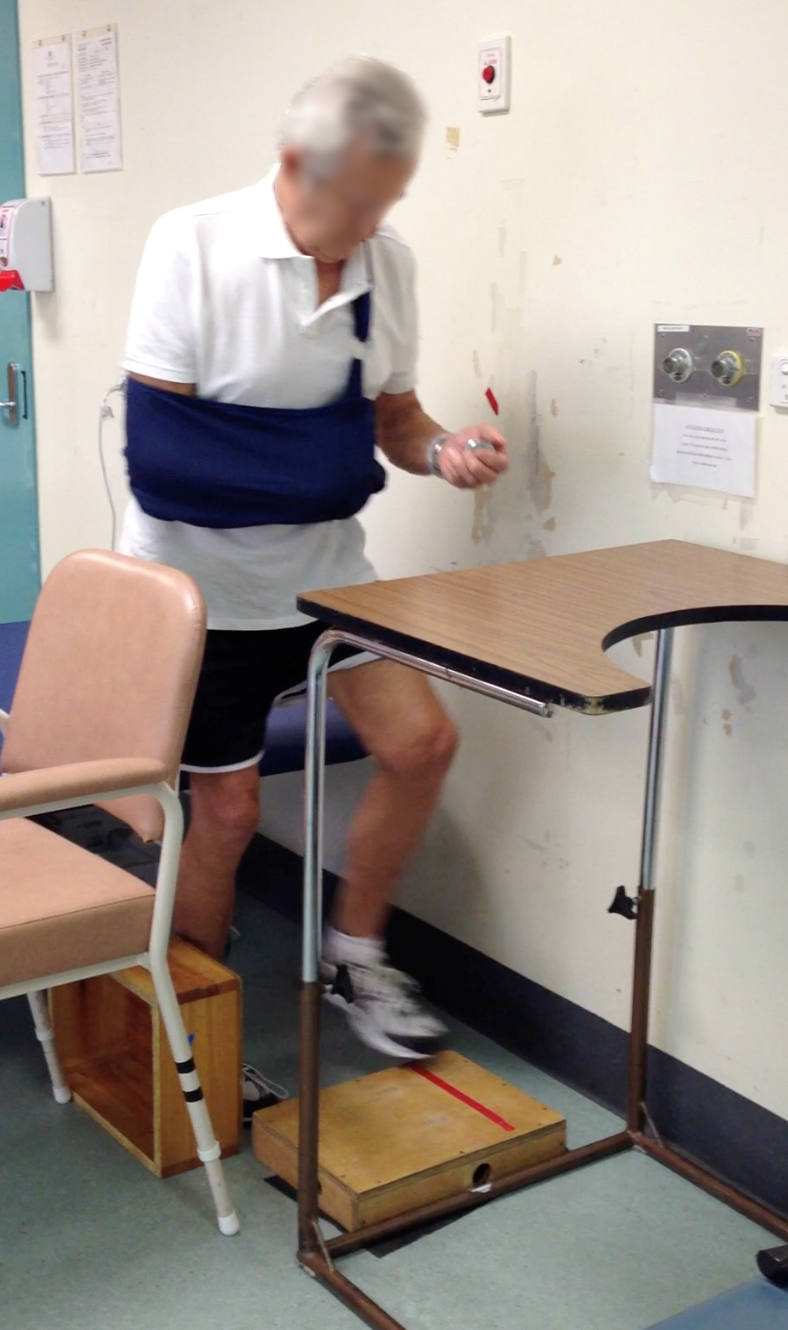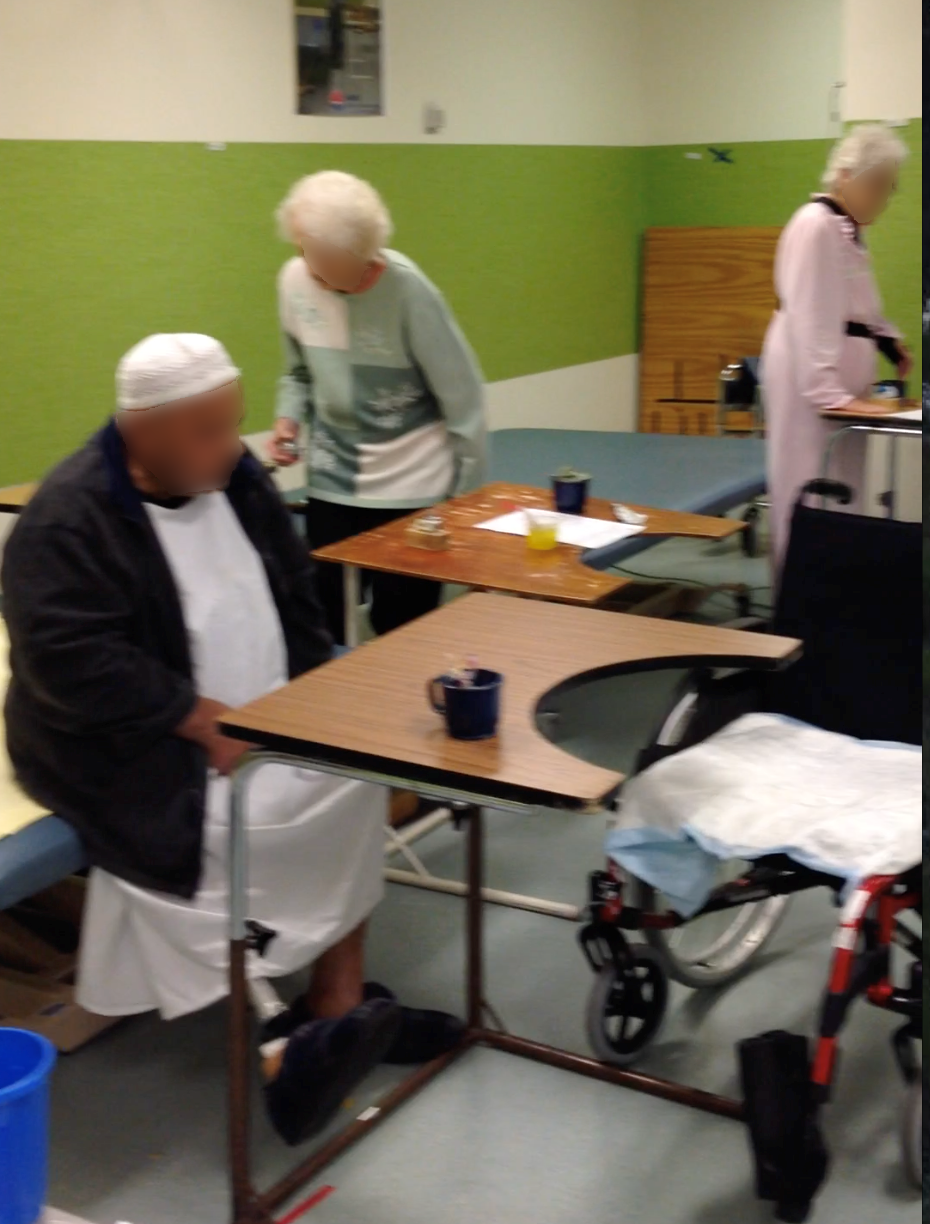This is the third of a three-part blog series on semi-supervised practice. This blog describes how to use equipment to increase the safety and effectiveness of semi-supervised practice.
Man with a stroke practising a step-up exercise
Environment set-up for safety
- Wall on unaffected side
- Height adjustable table in front
- Chair on affected side
- Plinth behind
Environment set-up for quality
- Block to prevent external rotation of right leg
- Tape on block in front to guide placement of left foot
Note – Counter in left hand to count repetitions of practice
Three people practising sit to stand and standing exercises
Environment set-up for safety
Man with hat practising sit to stand
- Height adjustable table in front
Woman in green pullover practising stepping exercise
- Height adjustable tables on either side
- Plinth behind
Woman in pink nightgown practising standing exercise
- Height adjustable table in front
- Wall on left side
- Plinth behind
Note – all have counters to count repetitions of practice
Balance class

Environment set-up for safety
- Height adjustable tables in front and to the side
- Plinths behind and on the side
- Walls behind and to the side
Environment set-up for quality
- Wall behind as cue to maintain hip extension in standing
Note – all have counters to count repetitions of practice
These photographs are taken from an appendix to a paper on semi-supervised practice which can be found at:


